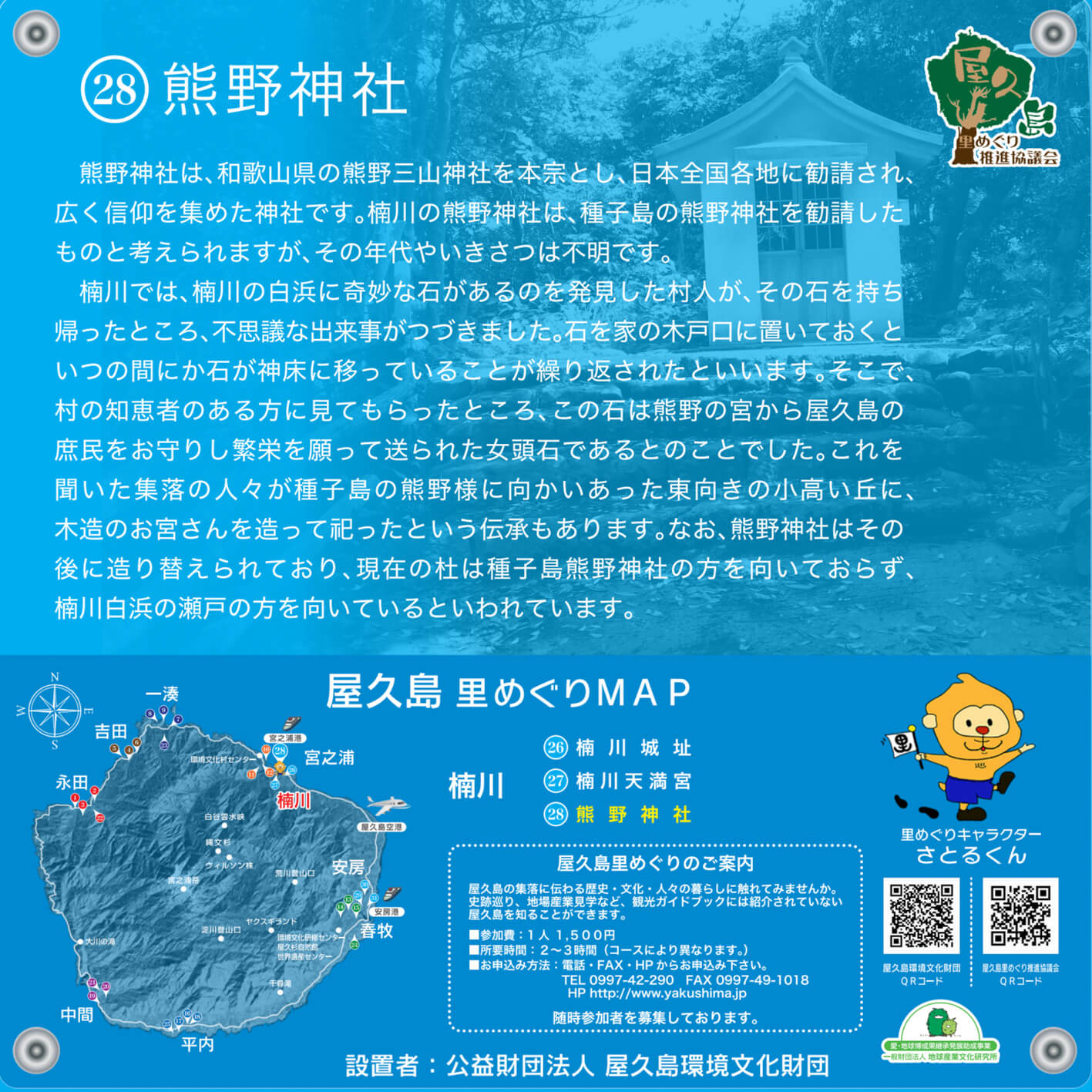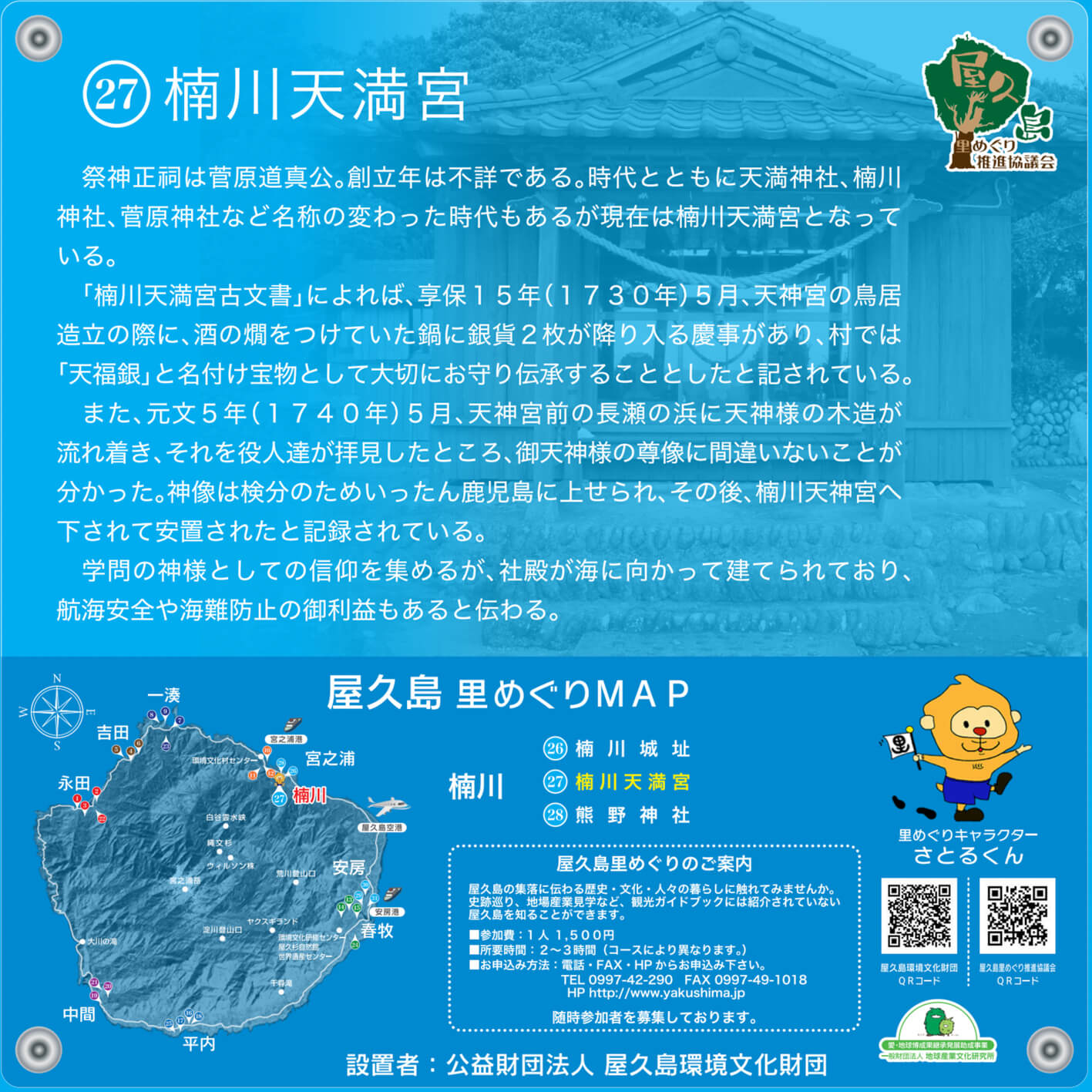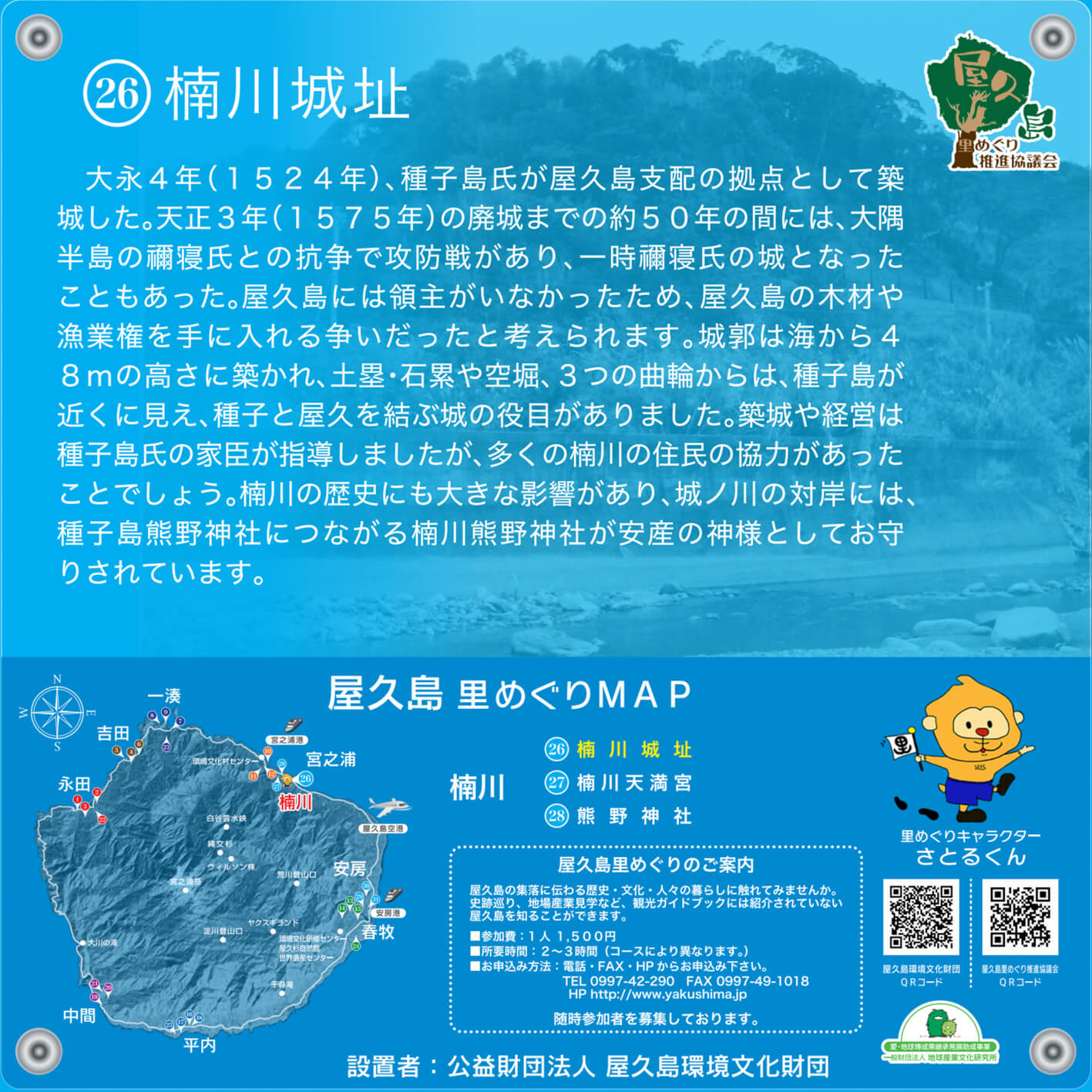kusugawa
Kumano Shrine
- Modification: 2024/01/10
- Area: kusugawa
Kumano Shrine was built as one of the many shrines across Japan that are subsidiaries of Wayakama Prefecture’s Kumano Sanzan Shrine. It is thought that Kusugawa’s Kumano Shrine was built as a branch shrine of Tanegashima’s Kumano Shrine, but the historical details remain unknown.
Long ago, villagers found very mysterious stones on the shoreline of Kusugawa. When they brought those stones back to the village, strange things began to happen. In an oft-encountered phenomenon, if a stone was left at the entrance to a home, it was only a matter of time before the same stone was found sitting upon the home’s kandoko (a small Shinto altar often found in old Japanese houses). When the villagers asked a local wise person about it, they affirmed that these stones were sent to Yakushima from Tanegashima’s Kumano shrine in order to protect Kusugawa’s people and attract prosperity to them.
Thus, in order to deify the stones, the villagers built a wooden shrine on a small hill that looks out across the sea toward Tanegashima’s Kumano Shrine. However, the shrine was later rebuilt, and now instead faces Kusugawa’s beach and the seas beyond.

Kusugawa Tenmangu Shrine
- Modification: 2024/01/10
- Area: kusugawa
The spirit enshrined here is Sugawara no Michizane, a poet from the Heian Period (approx. 800–1200 CE). The date of this shrine’s construction, however, is unknown. Its name, too, has seen many changes across the ages: Tenman Shrine and Kusugawa Shrine, among others. Nowadays, it is known as Kusugawa Tenmangu.
In the shrine’s ancient records, it is written that in May of 1730 (Kyōhō 15), there auspiciously appeared two silver coins in a pot being used to warm sake upon completion of the shrine’s torii gates. These coins were thus dubbed the “Silver of Heavenly Happiness,” and are stored as treasures at the shrine.
In May of 1740 (Genbun 5), a wooden likeness of Tenjin, the god of thunder, washed up on the beach in front of this shrine. When shrine officials laid their eyes on it, there was no mistake: it was a statue of Sugawara no Michizane. In order to verify this, it was first sent to Kagoshima, and then brought back to Kusugawa Tenmangu for safekeeping.
While Sugawara no Michizane is venerated at Tenmangu shrines across Japan as a god of learning and scholarly pursuits, this shrine was built facing the ocean—thus, it also functions as a shrine for the safe passage of ships and a protector against oceanic disasters.

Kusugawa Castle Ruins
- Modification: 2024/01/10
- Area: kusugawa
This castle was constructed in 1524 (Ōkubo 4) as an outpost for the rulership of Yakushima by Lord Tanegashima. Spanning the fifty years between its construction and its abandonment in 1575 (Tenshō 3), this castle saw a handful of battles as well as a brief change of hands with Lord Nejime of the Ōsumi Peninsula. Since there was no local ruler on Yakushima, these battles are thought to have been over the control of lumber and fishing on the island.
This fortress stood at an elevation of 48 meters above sea level. It was protected by earthen walls, stone walls, and a dry moat. Directly in line of sight from Tanegashima, it thus occupied a role in tying the two islands together. While the construction and operation was dictated by vassals of Lord Tanegashima, many of Kusugawa’s village people were involved in its lifetime.
Incidentally, the nearby Kusugawa Kumano shrine finds its counterpart in the Tanegashima Kumano shrine across the strait. Both are dedicated to safe birth and child-rearing.

〒891-4205
鹿児島県熊毛郡屋久島町宮之浦823番地1
TEL:0997-42-2900
FAX:0997-49-1018
(屋久島環境文化村センター内)













